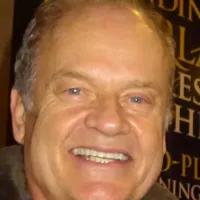Georges Seurat (1859-1891) was a French post-Impressionist painter who developed innovative painting techniques such as chromoluminarism and pointillism. These methods involved applying small, distinct dots of color to the canvas, which would then optically mix in the viewer's eye. He also explored the use of conté crayon on textured paper, further expanding his artistic repertoire. His work significantly contributed to the evolution of modern art.
1903: Death of Madeleine Knobloch
In 1903, Madeleine Knobloch, Georges Seurat's partner and the model for his painting "Jeune femme se poudrant," passed away. She had been living with Seurat since 1889.
1908: Cézanne's Influence on Proto-Cubism
In 1908, Paul Cézanne's dialectic work greatly influenced the expressionistic phase of proto-Cubism.
1910: Cézanne's Influence on Proto-Cubism
In 1910, Paul Cézanne's dialectic work greatly influenced the expressionistic phase of proto-Cubism.
1910: Monochromatic Cubism Emerges
In 1910, monochromatic Cubism emerged, shifting the focus of artists from color to form, making Seurat's work more relevant. His paintings and drawings were easily accessible in Paris due to several exhibitions.
1911: Seurat's Influence on Cubists
From 1911, Seurat's flatter, more linear structures captured the attention of the Cubists. His observations on irradiation and contrast allowed him to create a new aesthetic system.
1911: Monochromatic Cubism Emerges
In 1911, monochromatic Cubism emerged, shifting the focus of artists from color to form, making Seurat's work more relevant. His paintings and drawings were easily accessible in Paris due to several exhibitions.
December 2021: Google Doodle Honors Seurat's 162nd Birthday
On December 2021, Google honored Georges Seurat with a Google Doodle to celebrate his 162nd birthday.
Trending

6 months ago Sarah Sherman's SNL Checks Mistakenly Sent to Gilda Radner's Estate: A Sobbing Revelation

Lily Allen is an English singer songwriter and actress known for her distinctive voice and candid lyrics She gained prominence...

8 days ago Jesse Plemons discusses 'Bugonia', Oscar buzz, and career from child actor.

2 months ago Tyrese Haliburton Opens Up About Achilles Injury Grief, Impacting Pacers' Season Start

Simon Cowell is a prominent English television personality and businessman recognized for his role as a judge on various talent...

7 months ago Gary Payton Reflects on Jordan Matchup and Hypothetical Stats in Today's NBA
Popular

Candace Owens is an American conservative political commentator and author...

Ilhan Omar is an American politician currently serving as the...

XXXTentacion born Jahseh Dwayne Ricardo Onfroy was a controversial yet...

Tom Cotton is an American politician and Army veteran currently...
The Kennedy Center Honors are annual awards recognizing individuals and...

Kelsey Grammer is an accomplished American actor producer and singer...


